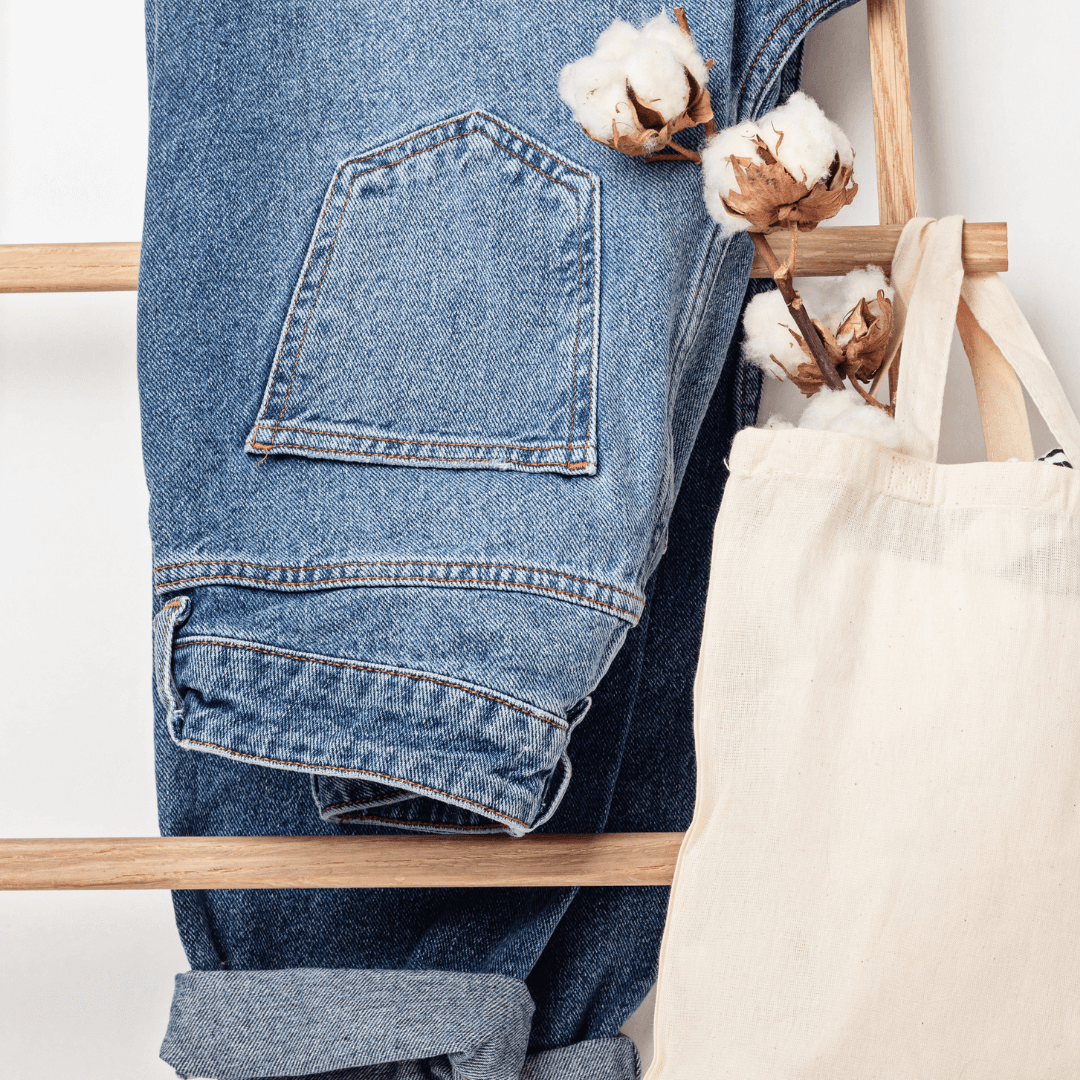Clothing is a necessity, but it should NOT come at the cost of the planet.
That’s what eco-friendly fashion is all about.
What is eco-friendly fashion?
Eco-friendly fashion is when products like clothes, shoes, or bags are manufactured using sustainable materials and methods.
But that’s not all.
It also is when a brand or business prioritizes the planet over profit, and sustainability is at the core of all business decisions.
How do we spot it?
To know if fashion is eco-friendly, we must examine the following:
a) how raw resources and materials are extracted from the natural world
b) how these resources and materials are transformed into products
c) what happens to these products at the end of their lifecycles
Why is eco-friendly fashion important in 2024?
Here are the top 3 reasons eco-friendly fashion is such an important topic in 2024 and beyond.

1. Because Fast Fashion = Climate Change
Clothing consumption has skyrocketed over the decades.
As a result, production has increased exponentially.
How exactly does this contribute to climate change?
Simple.
More clothes, shoes, and bags equals more raw materials, energy use, and transportation of materials and products.
While most mainstream brands have increased their production, they have NOT made their processes and facilities more sustainable.
They have increased their profits (typically the biggest business measure of success) without investing in carbon footprint reductions.
On top of this, our used clothes can do even more harm.
Vast quantities of discarded clothing and scrap materials end up in landfills and decompose for years, producing toxic greenhouse gases like methane.
Did you know that materials like polyester and lycra can take hundreds of years to decompose?
…Or when waste fabrics are incinerated (burned), carbon dioxide is released.
That’s excellent news for these brands, and very BAD news for us and for the planet.
On the flip side, eco-friendly brands minimize their carbon and waste footprints. Some are even carbon neutral certified or carbon positive!

2. Because Fast Fashion = Toxic Environment
Almost half of all clothing manufactured around the world contains cotton.
90% of cotton is genetically modified (GMO).
This means the cotton plant was exposed to synthetic and non-natural substances like pesticides, herbicides, and insecticides (typically sprayed with them), which are dangerous to the health of consumers and cotton farming communities.
Biodiversity loss and depletion of nutrients in the soil are common consequences, and they also mean large amounts of water are used in the production of our clothes.
But take organic cotton. It doesn’t use any chemicals, consumes 91% LESS water and has a 62% LOWER energy demand than cotton grown with heavy use of pesticides.
Leather production is another nasty polluter. The toxic slurry of chemicals, including chromium, used and discarded in the leather tanning process (when the skin is dyed in a specific color) pollutes groundwater and surrounding land.
Did you know that people working in tanneries are at risk for cancer and other serious health conditions from inhaling the chromium-laced air?
There are countless more examples of toxic chemicals and dyes used in the production of clothing, bags and shoes.
The good news is that eco-friendly brands use alternative methods that are safe for us and the planet, making them better for people and the planet.

3. Because Fast Fashion = Dissatisfaction
Ever wonder how you can have a closet FULL of clothes yet feel like you have NOTHING to wear?
Fast fashion brands’ black book of tricks is all about getting us to buy buy buy.
More often. More items. More cash.
Gone are the days when clothing brands released four collections coinciding with the changing seasons.
Now, fast fashion pumps out as many as 52 microseasons.
Consumer psychology conditions us to want more and to act on this desire.
But this kind of behavior is deeply unfulfilling, especially on a soul level.
It is the feeling of dissatisfaction created by the act of increased consumption that keeps us trapped in the cycle of consumption. What a paradox!
Eco-friendly fashion brands are often referred to as slow fashion brands because they release fewer collections and make smaller batches at a time.
They also encourage us to slow down in our day-to-day life.
To reflect on our shopping habits.
To ask questions before we purchase.
Questions like: What and why am I buying this? Do I need it? If I want it, will I use it? Do I have a reason to wear it? Do I have something else to wear it with?
What other questions do you ask yourself when trying to make more sustainable shopping choices? Changing your shopping habits by supporting eco-friendly brands is never too late.
We can help you do exactly that!
At The Greatest Good, we’re here to help you discover and shop eco-friendly and ethical brands that share your values. Click to read more about our 4-step verification process.
You can also go straight to our brands directory to discover them for yourself and start your eco-friendly fashion journey right here on The Greatest Good!
P.S. Our site contains affiliate links. When you make a purchase, we earn a commission. This is at no additional cost to you. Be assured, all brands and products meet our sustainable and ethical criteria.



